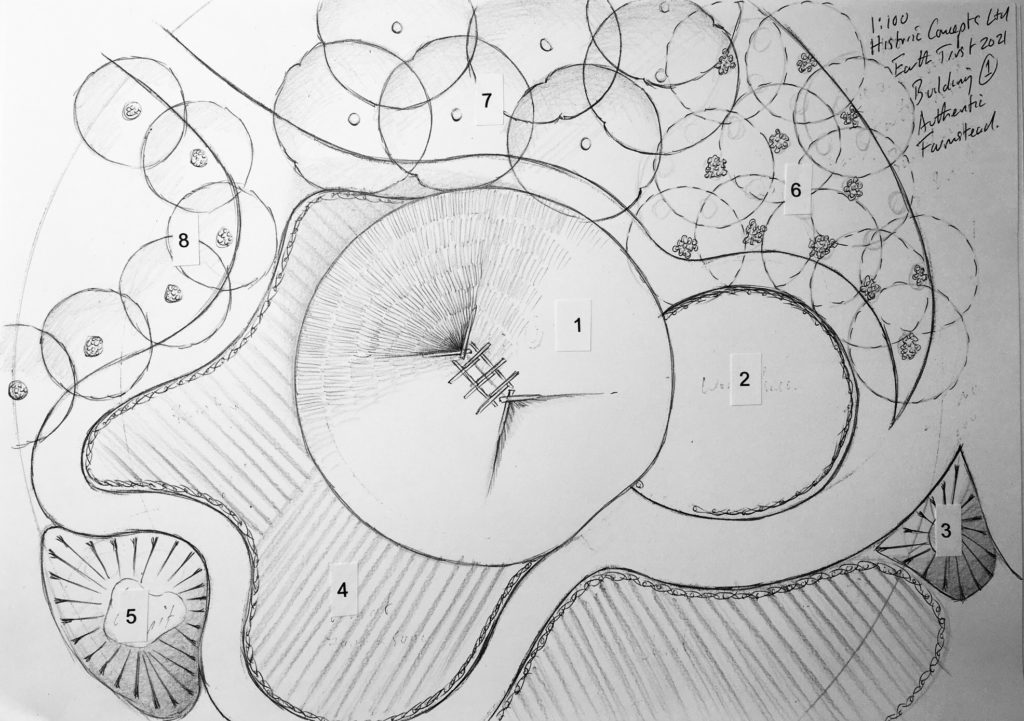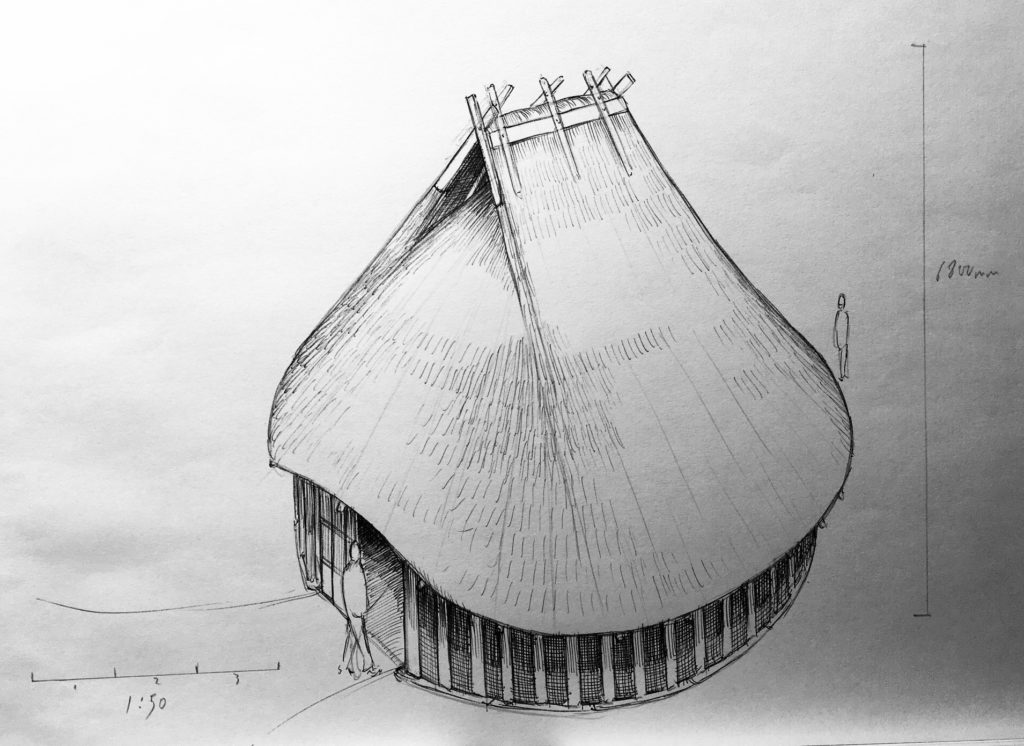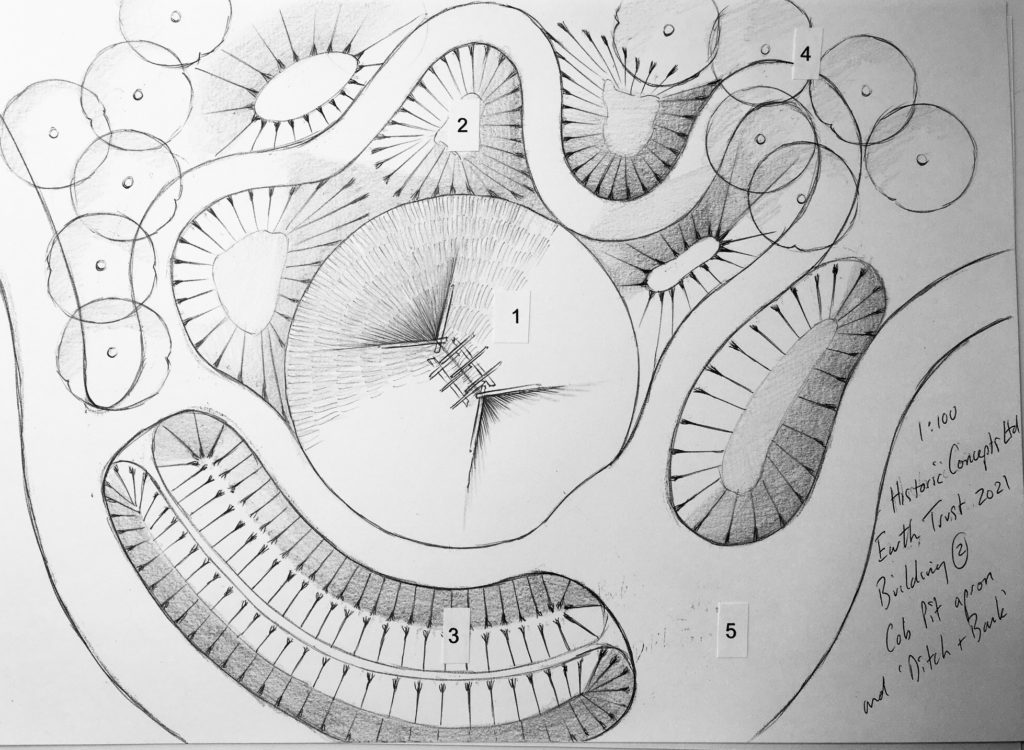Imagining an Iron Age view of the Clumps
Archaeological digs have shown that the Clumps, one of which is an Iron Age hill fort, were surrounded by Bronze Age, Iron Age, Roman and Saxon settlements. Most recently, DigVentures discovered a sizable Roman villa and an Iron Age settlement of at least 15 houses – but what would it have been like to live there? What would the roundhouses have looked like? And how different would it have been to village life here now?
Rather than just imagining the answers to these questions, we’ve enlisted the help of Luke Winter, Experimental Archaeologist and Director of Historic Concepts Ltd, to help bring the settlement to life. Luke has used the evidence discovered by DigVentures to form an idea of what the houses were made of, how they were built, what our Iron Age predecessors spent their days doing and the impact they might have had on the landscape.
Once built, these will be used as active learning buildings and gallery spaces, each reflecting different aspects of Iron Age life.
What will we create?
The three roundhouses will eventually be part of “Earth Adventure”, a unique and playful area at the Earth Trust Centre that will bring the heritage of the landscape to life and demonstrate its relevance to the environment today. Reconstructed roundhouses can be seen all over the country, but it’s often hard to connect the final product to how they would have been built and how this influenced land management at the time. We hope to shine a light on the reason for the existence of these types of buildings: the farmers who settled here.
The first roundhouse will represent a farmstead and reflect the impact of farming on the local environment while showcasing the benefits of traditional farming methods. This will be a 10 metre authentic Iron Age structure, built on the footprint of one of the houses excavated by DigVentures – a rare thing to be able to do! The garden will have examples of ancient wheat varieties and beans, pollarded willow and ash trees, coppiced hazel as well as clay and ash pits and an outside work space.

Building one positioned as an authentic farmstead.

Detail of building one with ventilated roof structure.
Two smaller Iron Age buildings will show alternative but equally authentic construction methods using different wall designs and roof materials. Their gardens will also be contrasting: one with a “bank and ditch” garden to represent earthworks of this period, and the other with a formally gridded garden which will display Iron Age plant species derived from pollen sampling evidence.
These buildings will house a hands-on archaeological excavation and interactive digital interpretation that will enable visitors to discover more about the construction of the roundhouses, including the species used for timber and the impact of a building on a given area of woodland.

Building two position with ditch and bank area.

Side detail of building two with cob wall.
Building the roundhouses
The key to this project will be volunteers, who will be building the roundhouses with Luke and his team. Volunteers will be trained in traditional skills and material management appropriate to the local area and architecture of each building.
We’ll be bringing the buildings to life with various volunteer-led projects that reflect day-to-day living and farming in Iron Age times, such as blacksmithing, weaving and dyeing, and making food. Tasks will involve managing local resources for the production of food and goods to populate the house. Over time, the building will be filled with artefacts, tools and produce that each tell a unique story about real life in the past. Visitors will also be able to take part in seasonal tasks that contribute to the building and its life.
What happens next?
We’ll be continuing to work with Luke to finalise our plans, and we’ll be sharing more about the details of the roundhouse and garden designs over the coming months, too.
What would you like to learn about life in the Iron Age?
Read more from our archaeology series:
Archaeology at Earth Trust – more finds revealed
Earth Trust Dig reveals 2,000 year history of Earth Trust Centre
Archaeology tour guides share their experiences